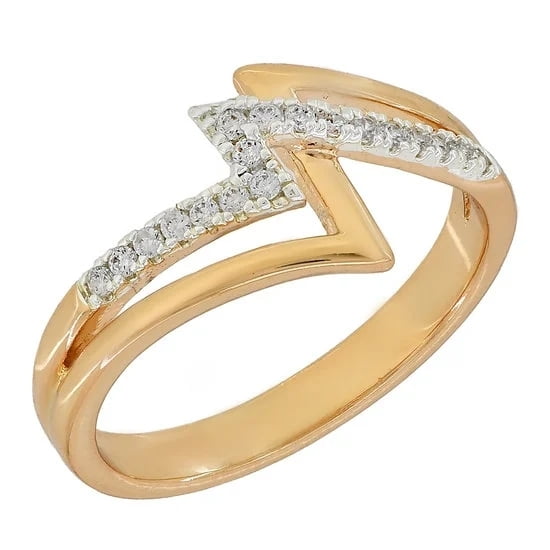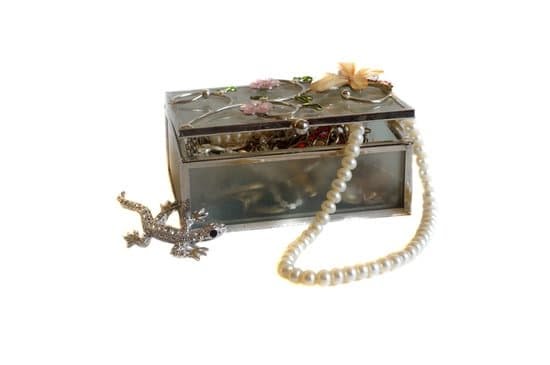Introduction
Ammonia is a colorless, highly alkaline gas that can be used as a cleaning agent. It acts as an effective solvent due to its strong neutralizing properties, which makes it perfect for cleaning jewelry items such as rings, bracelets and necklaces. The chemical composition of ammonia works to break down stubborn dirt and grime on jewelry pieces by dissolving away oxidation, while also removing dust, oils, and dirt without causing damage to the surface of the gemstones or metal involved. It’s important to note that using ammonia when cleaning specific jewelry pieces like pearls should be avoided in order to prevent discoloring or tarnishing of the item. When using ammonia as a cleaning agent for jewelry, it’s crucial to handle with caution as exposure to large doses could lead to health complications such as irritation of the eyes and nose.
Advantages and Disadvantages of Using Ammonia to Clean Jewelry
Advantages: Ammonia is a powerful, natural cleaning agent that can be used to restore the sparkle of jewelry. It is an effective degreaser and is capable of removing surface dirt from metals like gold and silver. Additionally, it can remove tough stains from precious stones like diamonds and emeralds.
Disadvantages: Although ammonia works well to clean jewelry, there are several drawbacks associated with its use. One of the main disadvantages is that ammonia is a caustic chemical that can cause damage to delicate gems or corrosion on certain metals if used improperly. Additionally, because ammonia is a corrosive substance it must be diluted before using it to avoid damage to your jewelry. Finally, using ammonia may require extra time and effort since it cannot be used directly on items with intricate designs; jewelry must first be soaked in a diluted solution before being cleaned thoroughly with a soft brush or cloth.
Types of Jewelry Safe to Clean With Ammonia
When using ammonia to clean your jewelry, it is important to be aware that certain types of stones and metals may react badly to it. Generally speaking, it is safe to use ammonia to clean gold, silver, and certain synthetic stones. However, ammonia should never be used on opals, pearls, malachite, jade or lapis lazuli – these are all porous stones and are easily damaged by acidic products such as ammonia. In addition to this, it should not be used on vintage jewelry or antique pieces as the metal could corrode over time with prolonged use of ammonia. It is always a good idea to test a small area first before completely cleaning the entire piece.
Preparation and Safety Before and After Using Ammonia
Before using ammonia to clean jewelry, it is important to ensure that the area you are working in is well ventilated and that you have protective gear such as safety goggles, gloves and a mask on. Additionally, you’ll need old towels or rags, laundry dish soap and hot water.
Once all of your preparations are complete, you can begin cleaning the jewelry. First, place the jewelry in a glass bowl or container then mix together one cup of warm water with two tablespoons of ammonia and the same amount of laundry dish soap. Next submerge the jewelry into the solution for up to five minutes. After it has been soaked you can use an old toothbrush to gently scrub away any dirt or debris before rinsing it with plain water and patting dry with a soft cloth.
When you have finished cleaning your jewelry it is important to ensure all traces of ammonia residue is removed from both the jewelry itself and from any tools used during its cleaning process. This includes rinsing everything off with running water until all bubbles have been eliminated from sight. Following this final step will ensure that no dangerous residual remains can cause damage to both the metal and stone components within your jewels over time.
How to Clean Jewelry With Ammonia
Ammonia is a powerful cleaner that can be used to clean many different types of jewelry. When used safely and properly, ammonia can help to make your jewelry look like new again. Here are some important safety tips and instructions to follow when using ammonia to clean your jewelry:
1. Be sure to wear gloves when handling ammonia as it’s very strong and could cause irritation if it touches skin or eyes.
2. Only use a small amount of ammonia per cleaning session since its strength can actually damage certain jewels over time if used in excess.
3. Prepare the cleaning solution by mixing equal parts of water and ammonia in a glass bowl or container.
4. Dip the jewelry into the solution and gently scrub with a soft bristled brush or toothbrush until all dirt, tarnish, and other debris have been removed.
5. Rinse the jewelry well with water once finished with the cleaning process, then dry thoroughly using a polishing cloth before storing away in an air-tight container for safekeeping.
6. Some more delicate pieces of jewelry may require extra caution when cleaning with ammonia – such as diamonds, pearls, opals, emeralds, etc., which could be damaged if exposed to too much harshness or abrasives when being cleaned so take extra precautionary steps with these types of gems.
Tips for Removing Stubborn Stains from Jewelry
It is generally safe to use ammonia to clean jewelry, but it should be done with caution. Jewelry that contains pearls, turquoise, coral, or lapis lazuli should never be cleaned using ammonia; these delicate materials can be corroded by even the mildest of solutions. Even if the jewelry is not made from any of these materials, you should always dilute your ammonia solution by mixing half water and half ammonia before use. When cleaning with ammonia, make sure that you work in a well-ventilated area because of its strong odor. Always thoroughly rinse your jewelry with plain water after cleaning it with an ammonia solution and dry with a soft cloth.
When dealing with extremely stubborn stains on jewelry such as tarnish or dirt deposits, a diluted paste made of baking soda and water can help to gently remove them. Apply the paste onto the affected areas then rub gently using a soft cloth or toothbrush before rinsing off the paste completely. For pieces that are heavily tarnished, polishing them lightly with a jewelry cleaner or polishing cloth may do the trick — just check the labels first to ensure it is safe for your particular type of metal! No matter which cleaner you choose to use for your jewelry, always take care to read any instructions carefully and wear gloves when handling any household chemicals for extra safety precautions.
Alternative Cleaning Solutions for Jewelry
Using ammonia to clean jewelry is not a recommended solution because it is potentially damaging to the metal and gemstones. Ammonia has an alkaline property that can soften and erode some metals, such as silver, if exposed over a long period of time. In addition, some gems, like pearls, are very sensitive materials that can be affected by acid or alkali substances and even the slightest touch of ammonia could discolor them.
When it comes to cleaning your jewelry, there are several alternative solutions that should be considered instead of ammonia. Hot soapy water tends to be quite effective when it comes to removing dust and dirt from most materials but avoid using a brush as this can scratch the surface. Other popular cleaning options include ultrasonic cleaners and steam cleaners which use a combination of mild soap and water for cleaning in a gentle way that won’t alter the color of an item or damage the item itself. Specialized products designed specifically for cleaning jewelry are available from many stores too; these products generally don’t contain any harsh chemicals or abrasives which could damage delicate items. Professional jewelers also offer services such as polishing, straightening and repairs.
Common Mistakes to Avoid When Cleaning Jewelry With Ammonia
1. Never mix ammonia with bleach or any other cleaning agent. Mixing these agents can create toxic fumes that can be harmful to your health.
2. Don’t use ammonia on jewelry made of pearls, coral, opal, ivory, or turquoise because the stone is too soft and delicate and could be easily damaged by ammonia’s chemical makeup when exposed to it over a long period of time.
3. Never let your jewelry soak in ammonia for an extended period of time, as this can damage the metal of your jewelry or even corrode it if left in solution for too long.
4. Make sure you use 1 part ammonia to every 8 parts water when combining the two to create a solution for immersion cleaning as using more than this dilution can be harsh on softer materials such as gold and silver, causing them to tarnish quickly.
5. Always rinse off the jewelry after cleaning with water and immediately dry off the surface with a soft cloth to prevent any residue from being left behind and discoloring the metal or stone later down the line.
Conclusion
No, it is not safe to use ammonia to clean jewelry. Ammonia is a powerful chemical and can damage delicate metal surfaces like jewelry. In addition, ammonia can alter the original colour of jewelry and cause discolouration or fading over time. Furthermore, ammonia fumes are toxic and should never be inhaled directly. It would be best to consult a professional who specializes in cleaning jewelry before attempting any kind of ammonia-based cleaner on pieces of jewelry – as even doing something wrong as minor as using too much of the solution can cause them lasting damage.

Welcome to my jewelry blog! My name is Sarah and I am the owner of this blog.
I love making jewelry and sharing my creations with others.
So whether you’re someone who loves wearing jewelry yourself or simply enjoys learning about it, be sure to check out my blog for insightful posts on everything related to this exciting topic!





